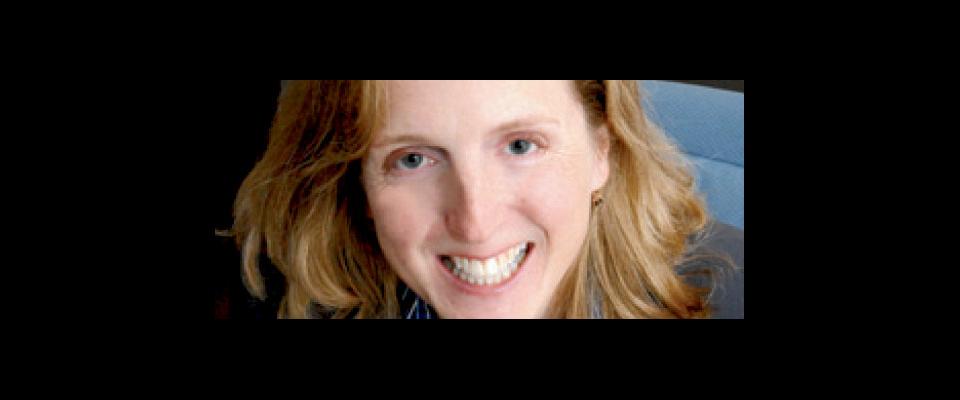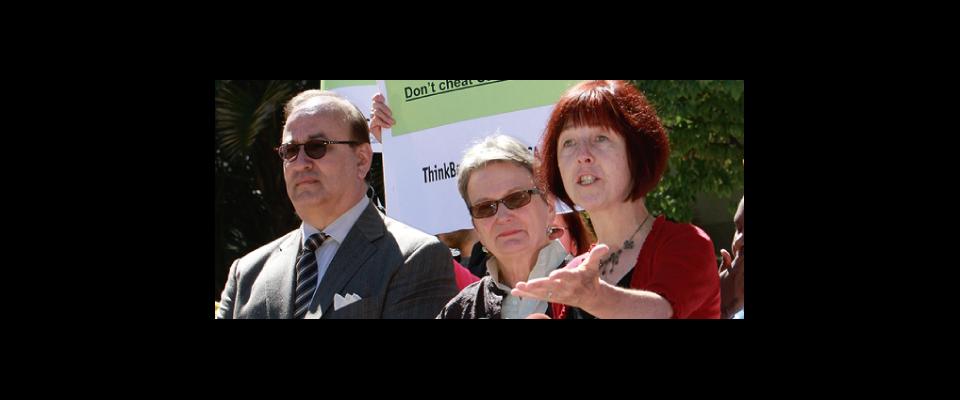As Berkeley’s director of sustainability, Lisa McNeilly will first need to figure out what, exactly, she’s supposed to do. Tasked by Vice Chancellor Nathan Brostrom with “fostering a culture of sustainability and adding accountability to our climate commitment,” McNeilly recognizes that such language explains little of how to get where we’re going. Since assuming the newly created position in January, McNeilly has been acquainting herself with existing environmental initiatives around the campus, many of which have been driven by students.
Last year, students voted to add $5 to their already rising school fees to fund green projects. They also demanded that Chancellor Robert J. Birgeneau take steps to reduce the school’s carbon footprint. Chancellor Birgeneau subsequently committed to meeting the state’s mandated carbon-reduction goals six years ahead of target—a 25 percent drop by 2014. Meeting this challenge will require emissions reductions from nearly every campus entity. And that’s where McNeilly comes in.
Under her direction, the Cal Climate Action Partnership (CalCAP)—a collaboration of students, staff, and administration—is currently reassessing campus carbon emissions, taking into account everything from waste disposal to student and faculty parking and transportation. McNeilly has planned nearly 200 retrofits to existing buildings; by 2011, this will have saved enough electricity to power 2,300 homes for a year. These efforts in combination with other initiatives, such as a student drive to replace incandescent bulbs in dorm rooms and encourage conservation through competition, will help achieve the CalCAP target.
Berkeley’s strength in research will play a key role in the quest for reducing carbon emissions, McNeilly says. For instance, a wireless lighting-control system developed by the Center for the Built Environment could save as much as 65 percent in energy costs by automatically shutting off lights in vacant areas and allowing individuals to control their own lighting.
But even if the school manages to meet its 2014 goals, that is still just a beginning. “You don’t just hit a point and go ‘whew, time to stop,'” says McNeilly. The slippery part of sustainability, and perhaps the reason no one can quite define it, is that the goals keep changing even as we meet them. As director, McNeilly will have to continually reassess targets while steering Berkeley toward a more sustainable trajectory. “I can’t envision the long run of what [being sustainable] would be, because there are options and choices and technologies that haven’t been developed yet,” she cautions.
Nor does she have an adequate definition of sustainability. “That’s the one thing I don’t have a good answer for,” she says, laughing. Nevertheless, McNeilly remains optimistic, using her gut as a guide. Sustainability, for now, means envisioning and pursuing real goals, whether it’s retrofitting old buildings, reducing paper consumption campuswide, or taking personal responsibility for reducing energy use. The sign on the elevator in McNeilly’s office building offers one simple suggestion: Take the stairs.




















